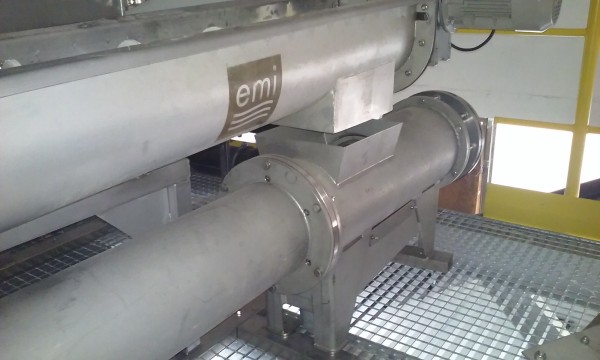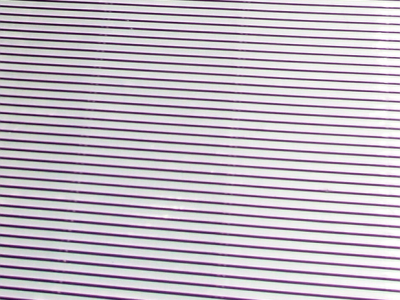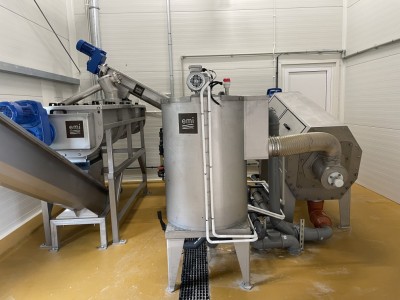

A device for dewatering and compressing solid waste from grates and sieves. It consists of a drum in a pipe with a piston that compresses the waste, the seepage flows out through the slots, and the compressed waste is pushed out up to 6 m. Recommended for waste with fats and oils.
A device for dewatering and volumetric compression of solid waste separated on grids and sieves ('screens'). The design consists of a drum hidden in a pipe with a piston moving inside the drum.
The waste falls into the drum, where it is pressed by a hydraulically driven piston. The seepage flows out through the slots in the drum, the compressed waste is pushed out of the press. The piston is strong enough to push the pressed waste to a distance of up to 6 m.
The hydraulic press is especially recommended for waste with a high content of fats and/or oils.
The small contact area of the piston with the compressed medium and the cyclic movement significantly reduce the deposition of contaminants. The effect of deposition of the pressed material is almost completely eliminated, which allows maintaining constant efficiency without frequent inspections and manual cleaning of the press.
When designing the screen, we paid special attention to eliminating places where dirt and debris could accumulate. Both during daily use and during cleaning, these details make maintenance easy and hassle-free.
The power of the hydraulic drive allows the piston to move the compressed screenings up to 6 m. Mounting the press directly next to the screens and using a sealed transfer pipeline solves the problem of contamination of the screen area, replaces screw conveyors and reduces the total cost of operation
Mechanical separation, i.e. separating solid elements from the wastewater stream

Most industrial wastewater streams contain solids that must be removed before wastewater reaches the treatment plant equipment. Removal of solids is necessary to protect pumps, mixers, sensors and other system components from blocking or even damage. In EMI installations, we use two stages of mechanical pre-treatment: coarse and fine. Coarse pre-treatment removes the largest elements, with a cross-section above 20 mm, and is carried out at the inlet to the first pumping station, before wastewater comes into contact with any pump. Coarse separation devices include vertical screens, basket screens and step/hook screens. The purpose of fine mechanical pre-treatment is to further remove solids, with their cross-section dropping below 3 mm, most often to 1 mm, although in some cases it is appropriate to use even smaller cross-sections (up to 0.25 mm). At this stage, rundown and rotary screens are used. The latter type of screen is used in a system with external or internal inflow. Mechanical pre-treatment involves very low costs, mainly resulting from the consumption of water rinsing the screens. No reagents are used, and energy consumption is minimal. Mechanically pre-treated wastewater is suitable for further treatment by physico-chemical and biological means.
Devices for removing water from sediment by pressing, squeezing and other mechanical methods.

Dewatering of sludge generated during the treatment of industrial wastewater is a key process aimed at reducing the volume of sludge and improving its properties for further processing or disposal. This process involves removing as much water as possible from sludge, which is achieved using various methods, such as centrifuges, filter presses or vacuum dewatering. The main goal of dewatering is to reduce the mass and volume of sludge, which translates into lower transport and storage costs. Dewatered sludge also has better mechanical properties, which facilitates its further processing, such as composting, incineration or biogas production. Additionally, reducing the water content in sludge minimizes the risk of leaks and environmental pollution. The dewatering process can also increase the efficiency of further treatment stages, for example by improving the conditions for anaerobic digestion. Thanks to sludge dewatering, the process of treating industrial wastewater becomes more economical and environmentally friendly.